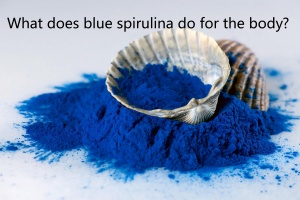What does blue spirulina do for the body?

Blue spirulina, a vibrant superfood derived from algae, is making waves for its potential health benefits. Packed with nutrients, it’s praised for everything from boosting energy to supporting immunity. But what does blue spirulina actually do for your body? This article breaks down its key benefits, how it works, and what to consider when adding it to your diet. With practical insights, you’ll learn why this colorful powder is worth the hype and how to use it safely.
What Is Blue Spirulina?
Blue spirulina is a natural pigment-protein complex extracted from spirulina, a type of blue-green algae. Unlike green spirulina, it’s made from phycocyanin, which gives it that stunning blue hue. It’s loaded with antioxidants, vitamins, and minerals, making it a popular addition to smoothies, lattes, and health bowls. Free from the fishy taste of regular spirulina, it’s easier to mix into recipes while still delivering a nutrient punch.
Boosts Antioxidant Power
One of blue spirulina’s biggest perks is its antioxidant content. Phycocyanin fights free radicals, which can damage cells and lead to aging or disease. Studies suggest it may reduce inflammation, helping your body stay balanced. By protecting cells from oxidative stress, blue spirulina could support heart health and lower the risk of chronic conditions. Adding it to your diet is like giving your body an extra shield against daily wear and tear.
Supports Energy and Recovery
Feeling sluggish? Blue spirulina might help. It’s rich in protein, B vitamins, and iron, which play a role in energy production. Athletes love it for its potential to aid muscle recovery by reducing exercise-induced inflammation. While it’s not a magic energy pill, pairing it with a balanced diet can keep you feeling vibrant. A teaspoon in your morning smoothie might just give you that extra pep in your step.
Enhances Immunity
Your immune system could get a boost from blue spirulina too. Its nutrients, including phycocyanin and beta-carotene, support immune cell function. Research shows spirulina may help your body fend off infections by strengthening natural defenses. While it’s not a cure-all, incorporating blue spirulina regularly could be a smart move, especially during cold season or when you’re feeling run-down.
Promotes Skin and Hair Health
Want glowing skin? Blue spirulina’s antioxidants and nutrients like vitamin E can help. It may protect skin from UV damage and improve elasticity, giving you a radiant look. Some users report stronger, shinier hair thanks to its protein and mineral content. While topical products with spirulina are popular, consuming it might work from the inside out to keep your skin and hair thriving.
How to Use It Safely
Blue spirulina is generally safe for most people, but start small—about 1/2 to 1 teaspoon daily. Mix it into smoothies, yogurt, or water for a vibrant boost. Buy from reputable brands to avoid contaminants, as low-quality algae can harbor toxins. If you’re pregnant, breastfeeding, or have autoimmune conditions, check with a doctor first. Too much can upset your stomach, so ease into it and listen to your body.


